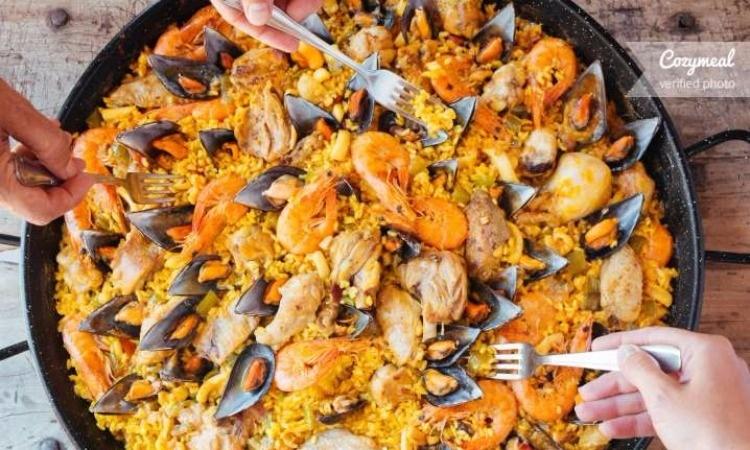Two of the most popular ethnic foods in America are Italian and Spanish, but learning how to cook them in an authentic manner often seems impossible. The range of spices and ingredients are very different, but an equal amount of effort is required to refine the skills needed to comfortably impress your next dinner guests. Below are a few of the main differences in Spanish and Italian cooking, as well as how you can develop the skills to bring these types of favorite foods to your table.
Chorizo vs Classic Italian Sausage
The differences in the taste of Italian and Spanish food lies in the abundant variation of spices used in the base ingredients. Chorizo is one main staple of Spanish cooking that sets it apart from Italian. Rather than using a spicy pepperoni, salami or Italian sausage, Spanish versions of soups, pizza and stews use the rich smoky flavor of cured chorizo. Dishes such as Seafood and Chorizo Paella are the best example of the difference between using Spanish ingredients to make a dish vs. Italian ones.
Manchego vs Italian Cheese Blends
Cooking both types of foods often call for cheeses of various types, but Spanish dishes seem to prefer the use of the slightly sweet and nutty Manchego. It is normally sliced thinly, just as Italian blends, but the flavor enhances a wider variety of foods. The popularity of Manchego makes it a staple for eggs, meats and pasta dishes alike. The heavy use of tomato based sauces in Italian cuisine call for the use of saltier and tangy cheese varieties, such as Romano and Parmesan. Rustic Vegetarian Italian is a good example of appropriate use of cheese in Italian cooking.
Appetizers and Light Foods
Spanish appetizers, brunch and light food items are in a dimension all their own. They are generally filling, without being over the top in both flavor and richness. Dishes like tortillas, which is a baked omelette, are satisfying to the palette, without the guest being overpowered in flavor. Italian light foods tend to be heavier, bolder in spice and rich. Italian stuffed pasta shells are a fine example of the extravagant splendor of light Italian cooking done right.
Serrano vs Parma Ham
Thinly sliced ham is common in both Spanish and Italian cooking, but the rich texture and flavor of Serrano makes it versatile. Parma is favored as a snack to be eaten alone in Italy, but it works just as well as a topping for pizza and pasta dishes. Serrano is also treasured as a stand-alone treat, but it is used in a variety if pasta and casserole dishes that are near and dear to authentic Spanish food lovers worldwide.
Availability of Fresh Produce
The drive to learn how to cook Italian and Spanish foods used to be based largely on the cost and seasonal availability of the fresh produce required for authenticity in taste. The import of fresh produce during all seasons has made it possible to experiment and learn how to cook either one affordably. There are some recipes that allow for preserved produce, but the difference in the results can be detected by the true fan of authentic Spanish and Italian foods.
Difficulties in Learning to Cook Italian and Spanish Foods
Grabbing a cookbook and trying to throw together a wholesome, great tasting meal with true Italian or Spanish flavor is hard without any real professional experience. It is worth investing in sound cooking technique instruction, utilizing the experience and skills of cooks that are well-known in their field of expertise. Consider bringing a professional cook to your location to walk you through the preparation, cooking and serving of an authentic Spanish or Italian meal. You can impress all of your friends and family with your newly acquired cooking skills.
Make a Special Event Even Better
Birthdays, holidays, wedding receptions and any special event involving a shared meal can be made even better by providing a true taste of Italy or Spain. You have the ability to help plan everything from the appetizers, main course and dessert. You can enjoy professional guidance in planning by a seasoned chef that can design the perfect meal plan for either Spanish or Italian food. The authentic flavor of the foods and attractive presentation will take your event to a whole new level of fun.
Experience the Difference
The best way to really learn the differences in Spanish and Italian cooking is to experiment with both and see which results you and your family prefer. Both have their own unique challenges, but the proper instruction and guidance will help you learn quickly and easily.
